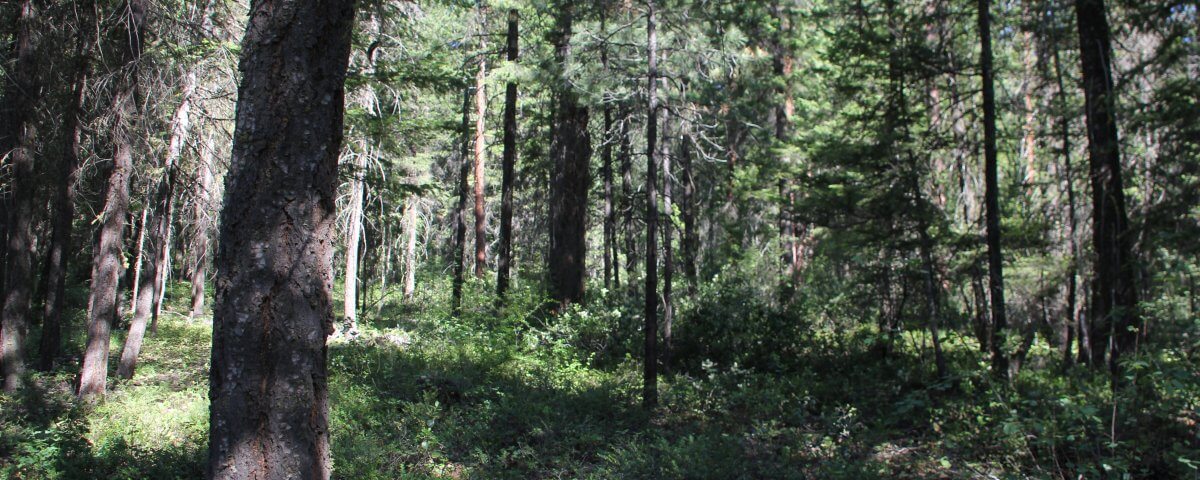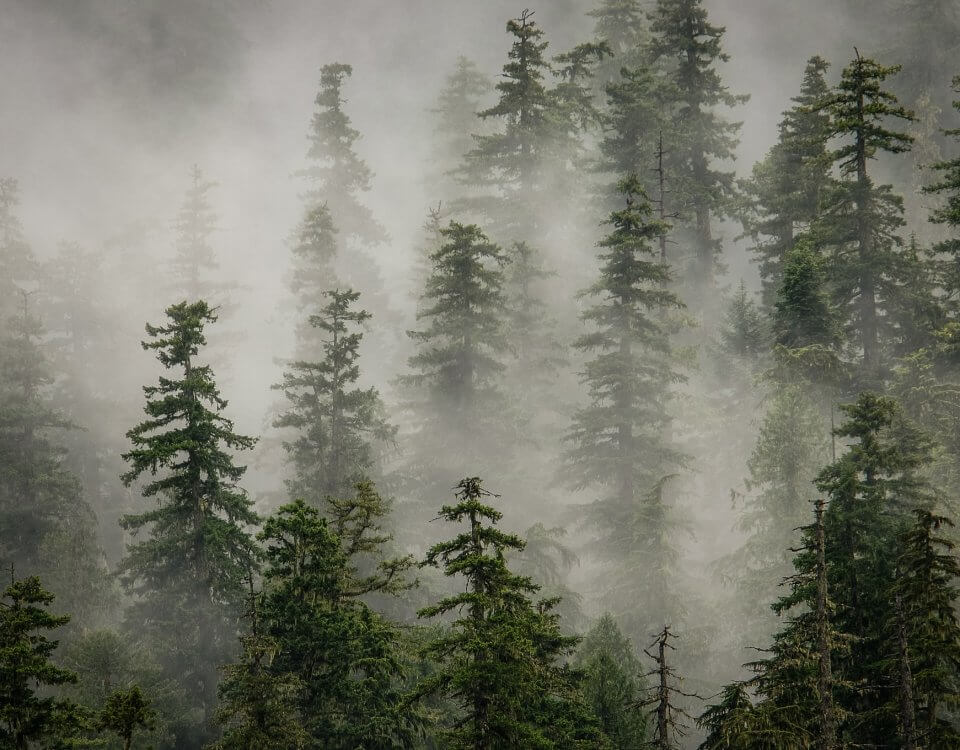Midnight Forest Restoration Comment Guide
The Methow Valley Needs your input on the Midnight Restoration Project!
The Methow Valley Ranger District is Accepting Scoping Comments through June 9th
You can Comment Here and find all the scoping documents and maps for the Project here.
What it is: Midnight Restoration Project is a 53,009-acre forest restoration plan in the middle and upper Twisp River watersheds. It also includes areas in Little Bridge Creek, and off Thompson Ridge Road and Wolf Creek. Following the Cedar Creek Fire, this area was dropped from the Twisp Restoration Project. The Midnight Restoration Project includes commercial and non-commercial thinning and prescribed burning that is intended to help the forest ecologically reset after over a century of fire suppression. Fire suppression and historic logging has led to an abundance of young dense forests that are prone to high severity fire and are far less resilient than a forest of old, large trees. Our East Cascade forests need fire. Careful thinning and burning together, when done properly, can create more wildlife habitat and prepare the forest for the warming temperatures. With the primary goal of this project being ecological restoration, and federal funding available to help pay for it, income from log sales should be a byproduct of the project, not a driving purpose or need.
For this project the Methow Valley Ranger District has outlined four main needs for the project that the proposed actions (thinning, burning, road maintenance) are intended to address. In our comment guide below, under each need we outline the actions we support in the Restoration Project. We also express our concerns and propose alternative actions to consider.
You are welcome to use our suggested comments but we also encourage you to find and put your own “why” with them. Focus in on parts of the project you are passionate or knowledgeable about. Express what you support about the Project. When expressing your concerns, include proposed actions which would help address the need the Methow Valley Ranger District is trying to meet. Be aware of using a respectful tone: individuals within our community are reading, considering and responding to these comments. See our guide to effective public commenting here.
Need # 1: Move current vegetation structure, spatial patterns, and composition toward desired reference conditions.
Due to over a century of fire suppression and logging, many areas of the Project lack old forest and have an abundance of young, dense forest. The areas of young forest are out of the historical norm (departed) for eastern Cascade forests and there is a need to return the forest to a mosaic structure and adapt the forest to the increase in drought stress it will see in the future due to climate change.
What we Support:
- The return of fire to the landscape
- Prescribed fire rejuvenates the forest and reduces the likelihood of high severity fire. Because it is labor intensive, challenging to implement and non-commercial, often prescribed fire is left out of the implementation of restoration projects. Numerous scientific studies show that to improve forest resiliency to fire, thinning should be followed by burning. It is a crucial part of the restoration of dry forests and should be prioritized in this Project!
- The thinning of smaller diameter trees
- In many places, the noncommercial thinning of smaller trees opens up the forest canopy, creates a healthy understory plant community and, when paired with fire, makes the forest more resilient and adapted to fire.
- Site-specific treatment of post-fire areas of the project
- Both the 2021 Cedar Creek and 2018 Crescent Mountain fire footprints overlap with the Midnight Restoration Project. We support non-commercial, non-mechanized site-specific treatments that help these forests recover from fire and encourage seedling growth.
- Thinning during winter months
- We applaud and support the Forest Service’s proposal to treat Riparian Reserves during winter months to minimize soil disturbance and erosion. We believe this is an important approach for preserving soil quality that should be considered across more of the landscape.
What Concerns Us:
- The proposal allows for the cutting of large trees, departing from the Okanogan-Wenatchee National Forest’s (OWNF) own Forest Restoration Strategy
- A recent memo from the Deputy Chief of the Forest Service reminded all Regional Foresters of the overriding direction set out by the Infrastructure Investment and Jobs Act (IIJA) for projects and applied this as guidance for the application in implementing the agency’s 10-year fuels strategy. In carrying out projects using IIJA funding, “agencies shall prioritize projects that maximize the retention of large trees, as appropriate for the forest type, to the extent that the trees promote fire-resilient stands”.
- In our dry climate on the east slope of the Cascades, our trees take a long time to grow! Mature ponderosas are often 100-200 years old. Even a moderately sized tree that’s 20” in diameter (the cut limit is 20” unless it has mistletoe where can go up to 25”) might be a hundred years old. Maintaining structure and function in the forest requires keeping large resilient trees that can withstand both fire and drought. These large trees also play an important role in storing carbon.
- Past logging in most of the forests we see today has removed many of the large, old trees. To restore old forests on the Midnight Project, all large trees over 20” in diameter should be kept. The definition of a large tree should be consistent with the OWNF Restoration Strategy which defines large trees as over 20” and very large trees as over 25”. The Midnight Restoration Plan currently defines medium trees as 16”-24.9” and large trees as over 25” Although large trees have more monetary value, it is important to remember that the primary goal of this project is to build resilience, not revenue.
- Dwarf mistletoe is often used as a rationale for cutting larger trees. However, large trees with mistletoe have additional values, including adding valuable wildlife habitat and forest structure. Dwarf mistletoe should be managed in accordance with the USDA Forest Service Management Guide for Dwarf Mistletoe which calls for removing trees with a mistletoe rating above 3 rather than a rating above 2 as called for in the Midnight Project. Use of this exception should be rare, and not used as a justification to cut large numbers of big trees. We support the Forest Service’s intent to document, mark and report to the public all large trees to be cut using this exception.
- Any mechanized impacts on fragile post-fire landscapes
- Bringing mechanized equipment into post-fire landscapes damages fragile soils. Any work intended to help these forest recover from fire should be completed by hand.
- Condition-based Management allows for too much variability between how the prescription is written in the Restoration Project and how it is implemented on the ground.
- Condition-based management allows the Methow Valley Ranger District to provide a treatment range (e.g. leaving 20-40 trees per acre) that can be implemented based on on-the-ground conditions after the Environmental Assessment has been finalized. Although this allows for more flexibility in practice, the lack of transparency and the unmet expectations as experienced in the Mission Project have shown this to be a tool that needs more honing.
- Where condition-based management is proposed on this project (most places), the range of variation in the prescription should be tightened to avoid surprises. Significant changes in the field review should be presented to the public and additional review considered prior to implementation. If condition-based management is used, adaptive management should be available as a tool to correct course in places where implementation is not meeting the purpose and need.
Need #2 – Protect and maintain wildlife habitat and complex forest in strategic places.
What we support:
- Developing and increasing the size and connectivity of northern spotted owl habitat
- Reducing the risk of high-severity wildfire in white-headed woodpecker habitat
- Increasing lynx habitat and maintaining remaining bitterbrush habitat for mule deer winter range
- All of actions described in Need #2 of the Restoration Plan could benefit from specific mapping of the habitat for each species. It would also be helpful to detail the resiliency of the existing habitat under a changing climate.
What concerns us:
- Treatments on ridgetops that impact lynx habitat
- Ridgetops are vital travel corridors, thus treatments in these areas should retain plenty of trees to maintain habitat.
- Ridgetop thinning is often used for fire control, however, designing treatments to get fires to the ground before they get to ridges can help the Project retain valuable habitat on ridgetops while still facilitating fire control.
Need #3 – Provide an affordable, safe, and efficient transportation system and reduce sedimentation from roads on National Forest System lands.
Over 172 miles of open, closed or unauthorized road exist within the Midnight Project area. Some of the closed roads will be opened for commercial thinning operations on this project. Of the roads that are opened, some will be decommissioned, while others will be left open mostly for administrative use.
What we Support:
- The decommissioning of 52 miles of road throughout the project area.
- Decommissioned roads can help to reduce fragmentation of the forest, sedimentation of creeks and rivers, and illegal, unauthorized use of the road network.
What Concerns Us:
- Permanent New Roads
- There are over four new miles of permanent new road construction being proposed in this Project. To be eligible for funding using the Infrastructure and Investment Jobs Act (IIJA), no new permanent roads can be built. The Methow Valley Ranger District should consider how to implement this project with no new road construction including the 2.7 miles of ridgetop road in the Little Bridge Creek drainage
- All currently closed roads should be decommissioned post-project(right now about half of them are being decommissioned)
Need #4 – Reduce fire risk to communities, reduce hazards along ingress/egress routes and improve firefighting effectiveness within and adjacent to Wildland/Urban Interface.
What we support:
- Properly thinning and burning the landscape as a whole will help this landscape be more resilient to fire and far less likely to carry wildfire quickly at high severities
- As extensive scientific research indicates thinning small diameter trees followed by regular prescribed burning is one of the most effective ways to control fire on the landscape. When fires do burn through these areas, they burn at low and moderate intensities that stay out of the canopy and maintain the ecological function of the forest. With properly implemented thinning and burning, linear, unnatural shaded fuel breaks (areas along roads that are thinned more intensively) become unnecessary as there are numerous anchor and control points in the forest itself from which to fight fire.
What concerns us:
- Shaded fuel breaks can be linear, unnatural breaks in the forest that fragment habitat
- Where shaded fuel breaks intersect with a treatment unit, the prescription of the unit should prevail –especially in areas of complex old forest stands. As detailed above, treatments across a full landscape are more effective than isolated, linear treatments
- We would encourage you to ask the Ranger District about how shaded fuel breaks intersect with a larger study about anchor points for fighting fires. Are fuel breaks far away from the Wildland Urban Interface (WUI) necessary to slow a fire?
- Shaded fuel breaks when not maintained, can fill in with dense understory fuels and become more of a fire threat
- Much like thinning should be followed by burning, shaded fuel breaks also need to be maintained with fire overtime to be effective. Is there a plan for maintaining these fuel breaks into the future?




